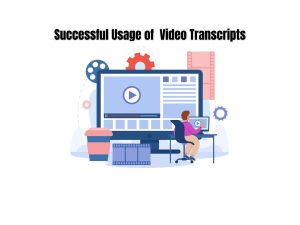
Case Studies: Successful Usage of Video Scripts
In the digital age, video content has become an integral part of online communication strategies for businesses and organizations across various industries. While videos are
In the boundless world of information, technical writing stands apart for its purpose — to relay complex ideas, concepts, or processes in an easy-to-understand format. At the very core of effective technical writing lies one crucial aspect — information design. Properly organizing and presenting your content can make or break its reception. In this blog, we’ll delve into the role of information design in technical writing and how to leverage it for effective organization of your content.
Information design is concerned with transforming complex data and information into comprehensible, accessible formats. In technical writing, this becomes especially crucial as the objective is to present potentially complex technical information in a clear, concise, and user-friendly manner.
The core facets of information design include:
Organization of Content: Constructing a logical structure that aligns with the user’s thought process.
Clarity: Making sure the information is easily understandable.
Accessibility: Ensuring easy navigation and retrieval of the required information.
Visual Appeal: Making the content aesthetically pleasing to encourage engagement.
Creating an effective piece of technical writing is not just about the writing itself, but also about well-structured, well-organized information. Here’s how to approach this task:
Knowing your audience and their needs is the foundation of effective content organization. Understand who will be reading the document, what they hope to gain from it, and their prior knowledge of the topic.
Plan and structure your content logically to ensure it’s easy to follow. Break down complex ideas into manageable sections and sequences. Make sure each section serves a clear purpose in the overall understanding of the topic.
Use headings and subheadings to create a clear and easy-to-follow structure. They act as signposts, guiding readers through the content and making it easier to find specific information.
Use visuals like diagrams, graphs, tables, or flow charts to present data or processes. This not only breaks down complex processes into easier-to-grasp elements but also serves to engage the reader visually.
Pay attention to typography, line spacing, and margin sizes. Short paragraphs are easier to read than long ones. Bullet points or numbered lists make your content easier to scan.
Consider where and how the content will be used. If the content will be accessed on mobile devices or in the field, ensure that it’s designed accordingly.
Information design is a pivotal aspect of technical writing, enabling clear, efficient, and effective communication of complex ideas. By understanding your audience, creating a logical flow, utilizing intuitive structure, integrating visuals, and considering the context, you create documents that not only present the technical data but do so in a way that is accessible, user-friendly, and effective. After all, technical writing’s mission is to make the complicated uncomplicated, and the cornerstone of achieving that lies in robust information design.

In the digital age, video content has become an integral part of online communication strategies for businesses and organizations across various industries. While videos are

Duplicate content refers to identical or similar content that appears on multiple URLs within a website or across different websites. While duplicate content is common





“LeadsView did an excellent job with my project and will definitely recommend. Easy to work with, flexible and good quality of work. I am more than happy to recommend them."




















Copyright 2023 © LeadsView. All Rights Reserved
